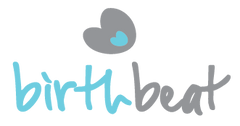Baby & Child First Aid - Would you know what to do?
Unfortunately, baby & child-specific first aid is something many parents overlook or simply put on the to-do list. Then they just never get around to it. While it’s absolutely essential for big things like choking and drowning, it’s also super important for other more common health concerns like; fevers, broken bones, stings, bites etc.
As a Registered Nurse and Emergency Clinical Nurse Consultant, I couldn’t tell you the number of times I’ve seen parents arrive in the emergency department with their child who has a fever and no form of pain relief (such as paracetamol) had been given. Oftentimes, with a mild fever all a child needs is rest, hydration, pain relief and monitoring to get things under control. They don’t need to be sitting in an emergency department for hours.
This is just a basic example. Imagine the feeling of not knowing what to do in the case of an emergency, when minutes matter. You want to know what to do so that you can stay calm, act quickly and do everything possible until professional help arrives.
Learning to understand signs and symptoms in your child, knowing what you can and should do at home, knowing when to seek medical attention, or knowing when to call an ambulance are all crucial skills that I wish every parent had.
One of the most common questions or concerns I get from new parents is around introducing solids to their baby for the first time. This is something we cover comprehensively inside our online program. However, there are a few key points that you can take away right now so that you understand exactly what’s normal, what’s not and when you need to call an ambulance.
Choking
Choking is one of the most common reasons an ambulance is called to family homes. Knowing what to do in the event of choking could be a matter of life or death.
One of the biggest areas of confusion for new parents is understanding the difference between gagging and choking. This is especially common when parents start introducing solids to their baby and bub is trying to learn how to manoeuvre food around their mouth, chew and swallow. For many first-time parents, a gagging baby (which is completely, developmentally normal) can be quite confronting if not scary.
What’s the difference between gagging and choking?
A gagging baby will make a noise, possibly go a bit red in the face and look like they’re trying to get something up – mostly likely some food they should have chewed a bit more before attempting to swallow! The gagging sounds awful! But it is all a natural part of their learning process as they discover how to bite off the right amount of food, chew it the correct number of times and swallow.
As a parent, watching this can be quite distressing. Your instinct will probably be to try and pat them on the back and ‘get it up’. But what I teach parents in our program is that they should sit on their hands, put a big smile on the face and say encouraging things like ‘good girl! Chew, chew chew.”
As a basic rule of thumb, if they’re making noise it means air is getting through the airway. Always supervise your baby when they’re eating and watch for further ques. But if they’re gagging, they’ll soon get that bit of food back in their mouth or spit it out, ready to try again.
Choking, on the other hand, is when the airway is obstructed. That means there is no noise. There will likely be a colour change where you’ll notice a blue tinge around the lips and nose and they may look very frightened and alarmed but they won’t be making any sounds.
What should you do if your child is choking?
This is when you need to step into action immediately.
If you’re with another adult, get them to call an ambulance. Or if you’re alone, phone them straight away.
In the meantime, take your baby out of their highchair (bubs should always be able to sit up and support their heads properly before starting them on solids. They should also always be fed in a proper, upright position) and place them face-down over the crook of your arm so that you’re supporting their head. Make sure you’ve got gravity working with you by ensuring their head is lower than their bottom.
Proceed with 5 firm hits with the heel of your palm, aiming for the bottom to the middle of shoulder blades. We give a full demonstration of this inside the program, but it does need to be quite firm and almost aggressive. Remember, this is potentially going to save your child’s life and is only done in an emergency.
Rotate your baby over and check to see if whatever was obstructing the airway has been dislodged. If you can see it just inside their mouth, remove it. But never try and poke around or dig something out that’s well inside their mouth as you could accidentally lodge it down further.
If the obstruction hasn’t been dislodged, you need to continue with another 5 hits to the mid to lower part of the sternum using the heel of the palm of your hand. You may need to rotate baby again and do another 5 hits to the back.
This is a very effective method for choking in babies but in some cases, you may need to proceed with CPR. The hope is that you’ve called 000 and by the time help arrives, your bub has had a big vomit, the blockage has been dislodged and they’re crying. But in the event that you can’t, you need to know you’ve done everything possible to give your child the chance of a full recovery.
Inside our baby & child first aid program, we cover exactly when to know to start CPR and how to perform CPR on babies, toddlers and older children.
Please be aware that this post is not intended as medical advice or information in place of first aid education. It is merely to give parents some insight into one of the most common areas of confusion around choking and gagging. And, to give you an idea of the types of skills you’ll learn in a baby & child-specific first aid course.
It’s a horrible thing to imagine, but accidents and emergencies do happen. Children choke. They can drown in a shallow bath in just moments, they slip, trip and fall. Getting the knowledge to know exactly how to respond is so crucial and will help you act calmly and effectively. It’s better to be prepared and never need to use the information than to wish you’d known what to do in a life or death situation.
We offer a 100% online education option with our Premium Online Baby & Child First Aid Course. This will arm you with the essential information you need to care for your child.




